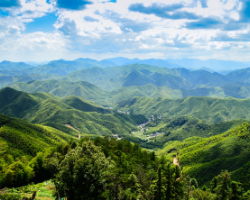Bamboo is one of the oldest building materials on this planet and has been used for centuries, mostly in Asian countries where bamboo is abundantly available. Due to the relatively high percentage of less developed countries in which this abundance is present, bamboo is often referred to as the “poor man’s timber”.
Strong associations that have been connected to bamboo provokes personal opinions: it is a material that is either loved or hated. In this article, some of the most common myths about bamboo will be discussed and debunked, along with the history that led to the misunderstanding.
Bamboo is a weed that grows anywhere
Many people are aware of bamboo as it is used in landscaping and often causes difficulties, due to the different properties of the many bamboo species. There are two categories in which bamboo can fall into: running and clumping. Some species do spread very quickly through their underground rhizome systems, these are the “running” bamboo species. The second category is the “clumpers”, these will generally stay in one place. Moso bamboo is one of the running bamboo species, which means that it can spread quickly and will not stay in its original place.
Bamboo is not very strong because it bends easily
Bamboo actually has a low E-modulus, but has a higher linear elasticity than wood. This means that it can bend further than wood without breaking, which is very useful in housing in earthquake prone areas and many other applications.
Bamboo is stronger than steel
Bamboo is only stronger than steel when looking at the tensile strength of the bamboo fibre per weight unit. Incorrect marketing and over exaggeration has led this myth.
Pandas are in danger of extinction due to the industrialisation of bamboo
The survival of the panda is not a matter of lack of bamboo but the destruction of ecosystems, as bamboo actually grows quicker than a panda’s digestive system is able to handle. On top of this, the giant panda’s natural habitat (Sichuan province, Central China) does not overlap with the location of Moso bamboo, found in Eastern China. Even if that was the case, the branches of Moso bamboo would be too high for pandas to reach.
Bamboos fast growth depletes forests and soil
On the contrary, bamboo is very suitable for reforestation to revitalise poor, eroded grounds by restoring the canopy and retaining soil and water tables through its extensive rhizome network. Bamboo is a grass, meaning that it grows in a totally different manner to trees, making the comparison between bamboo and trees difficult to grasp, in some respects. Thus, when comparing bamboo to trees such mistakes can be made which have a “Chinese whisper” effect and quickly escalate.
Bamboo plantations lead to tropical deforestation
Tropical deforestation occurs when tropical forests are not protected and often destroyed for cattle farming, infrastructure or high-yield crops, such as soy or palm oil. The growth of the worldwide bamboo area, on the contrary, comes from natural expansion (runners) and reforestation of degraded land with bamboo, in particular in India and China. However, this is something that must be monitored by specialists, as the threat of tropical deforestation occurring to plant bamboo exists which should, of course, be prevented at all costs.
Bamboo is susceptible to insects
This is only true for the natural, untreated bamboo stems, which are rich in natural sugar. There are many, non-toxic methods, like heat treatment to prevent vermin invading bamboo.
Bamboo is not a sustainable material because of the transportation aspect
All solid MOSO Bamboo Products have a negative carbon footprint (CO2 neutral or better) over its lifecycle, which includes the transportation to the warehouse. The emissions due to transport (and production) are counterweighted by the benefits of this rapidly renewable material and the amount of CO2 that is stored in the material during its growth phase.









.jpg?quality=high&width=900&height=450&name=Bamboo%20forest%20resource%20blog%20header%20(5).jpg)






